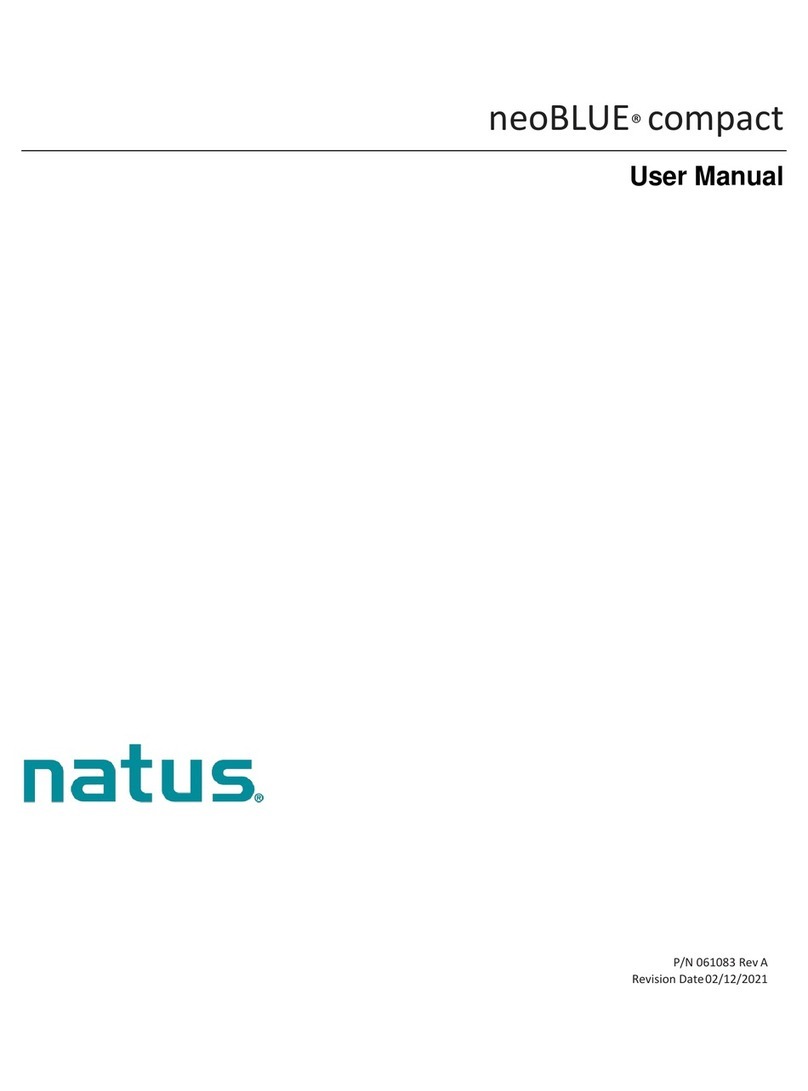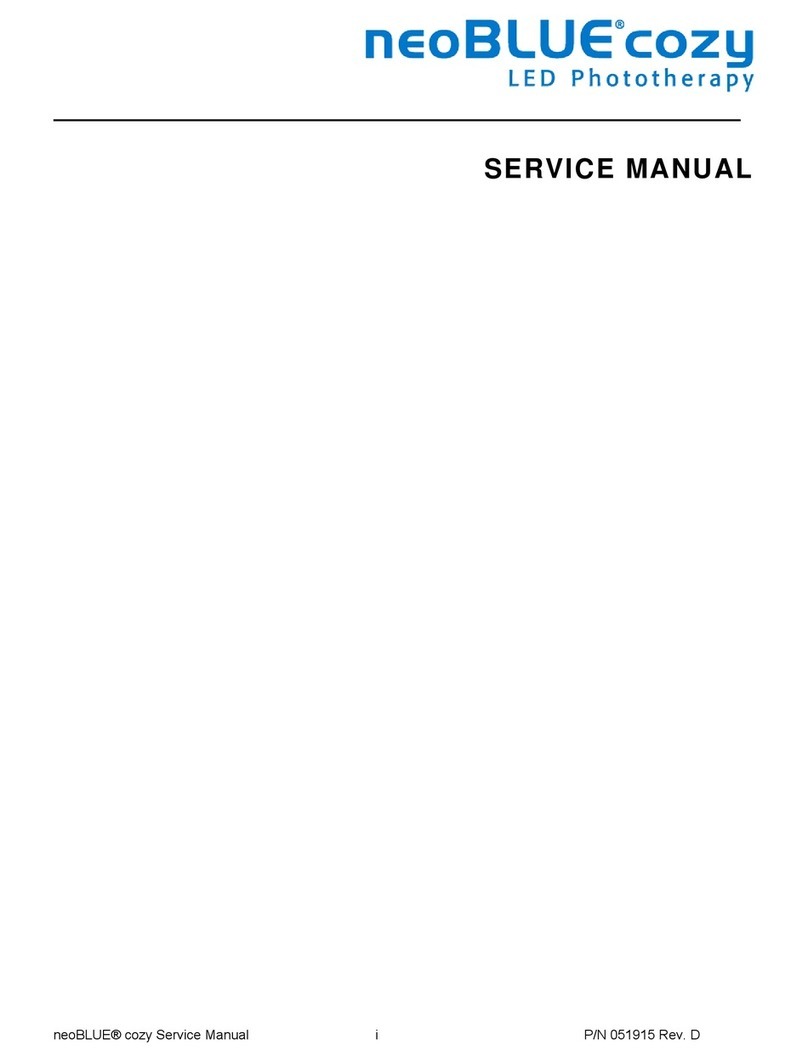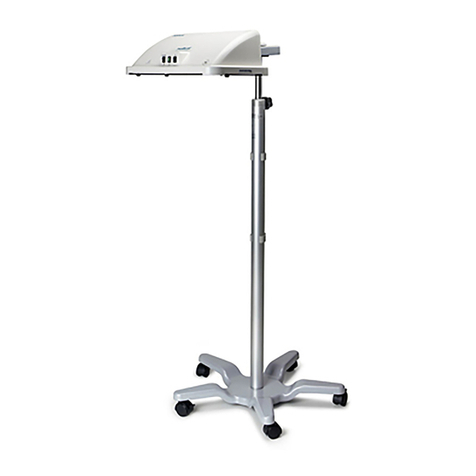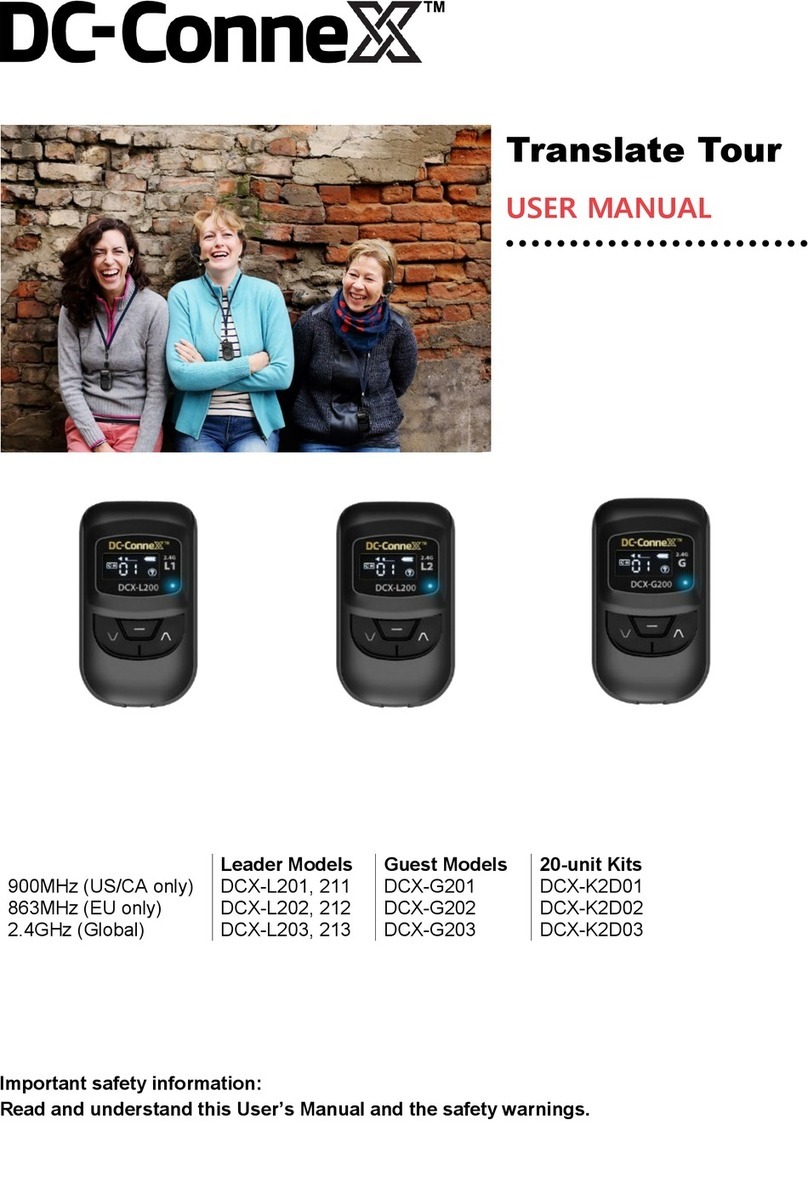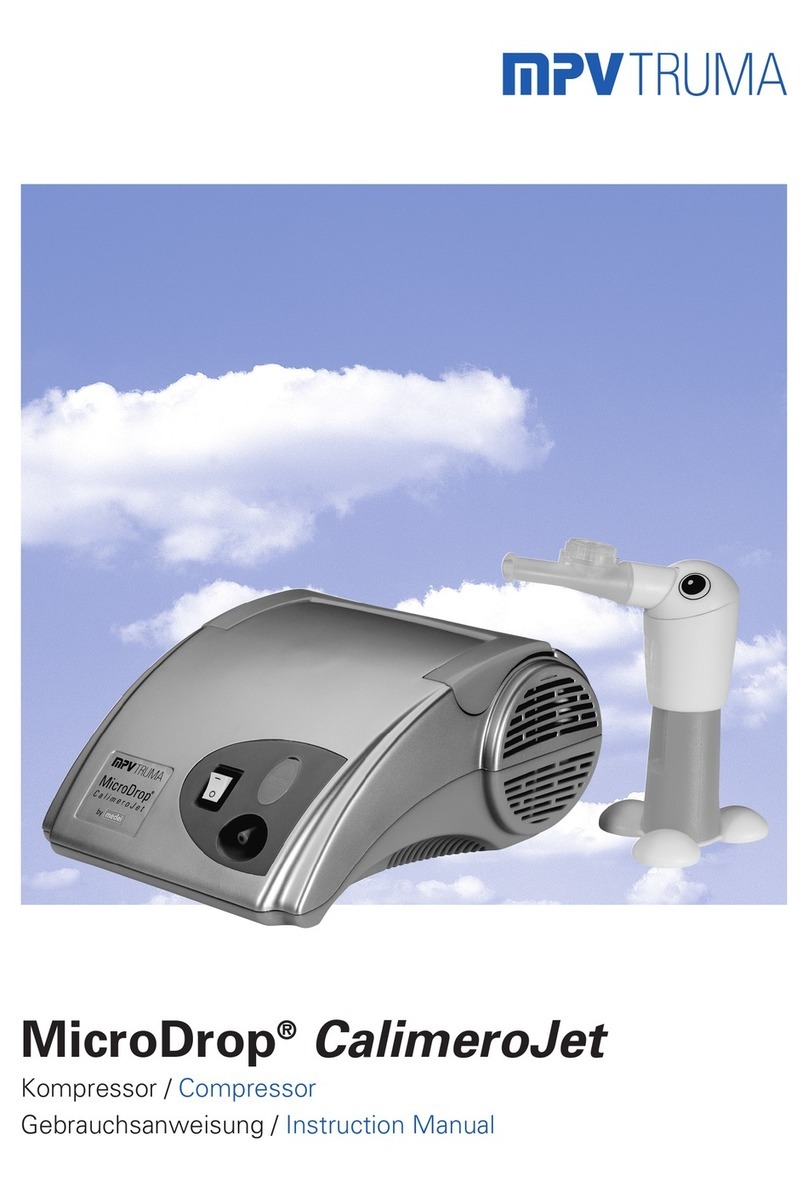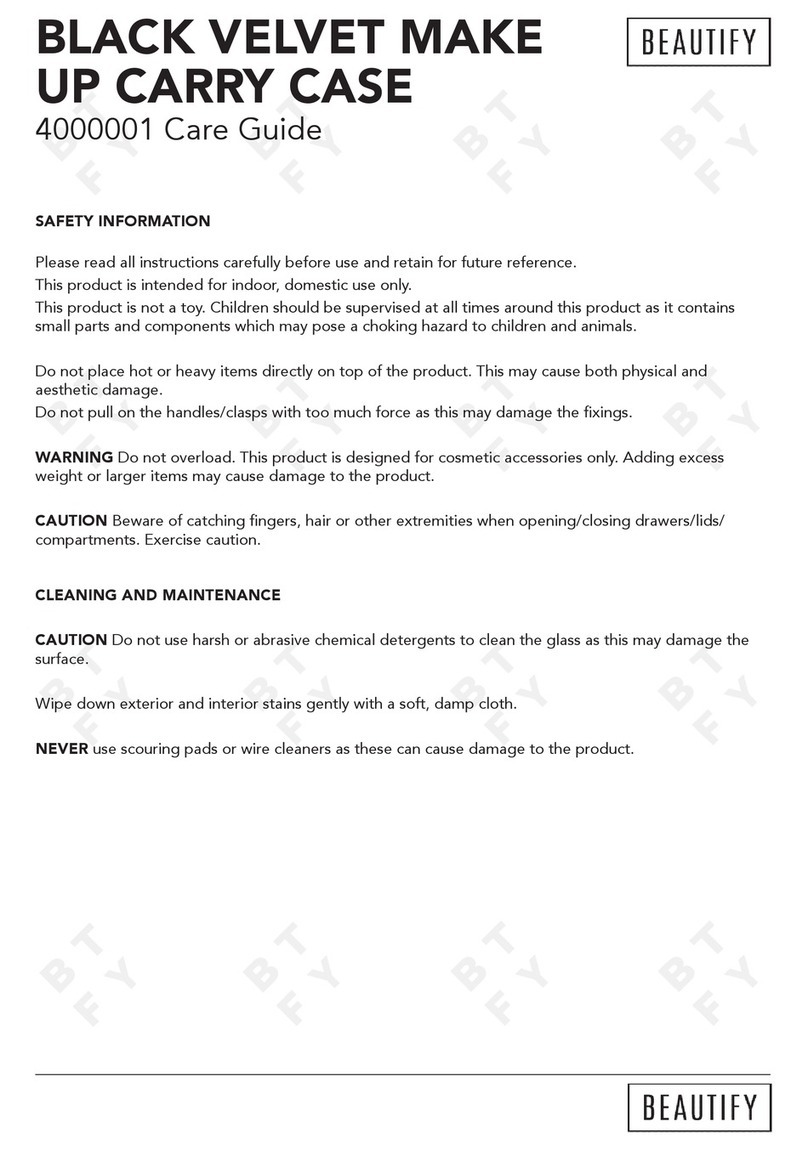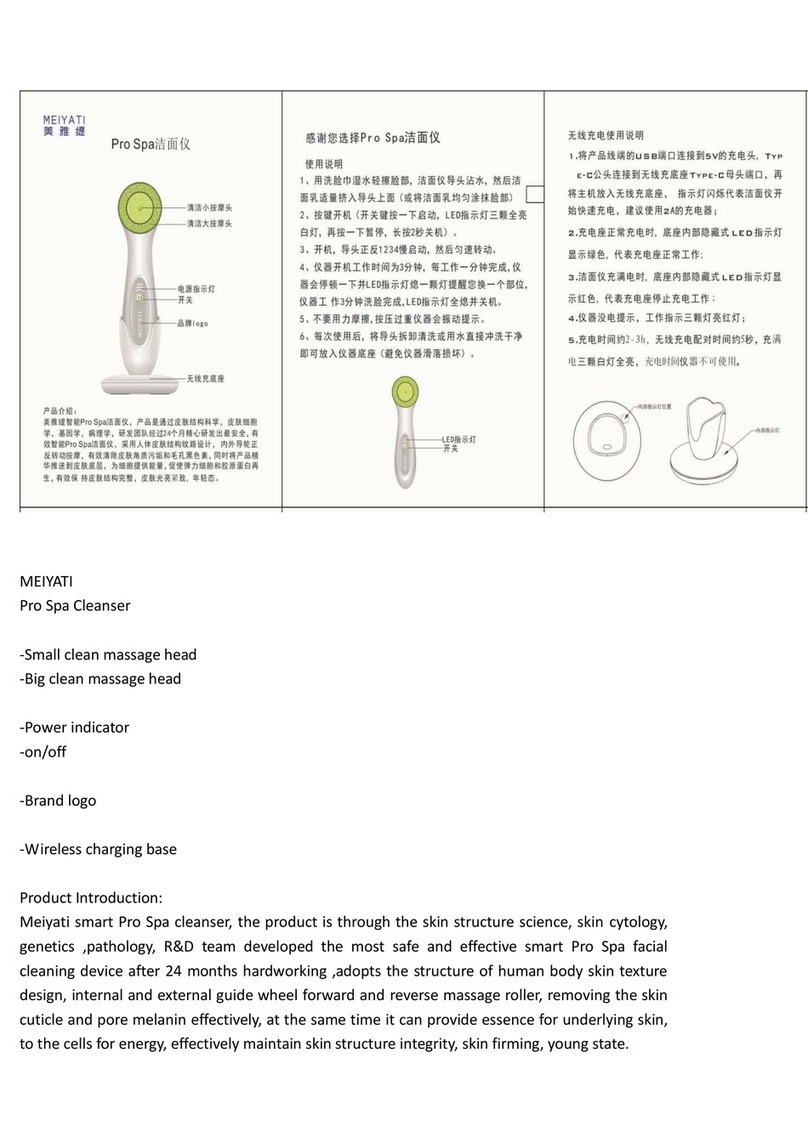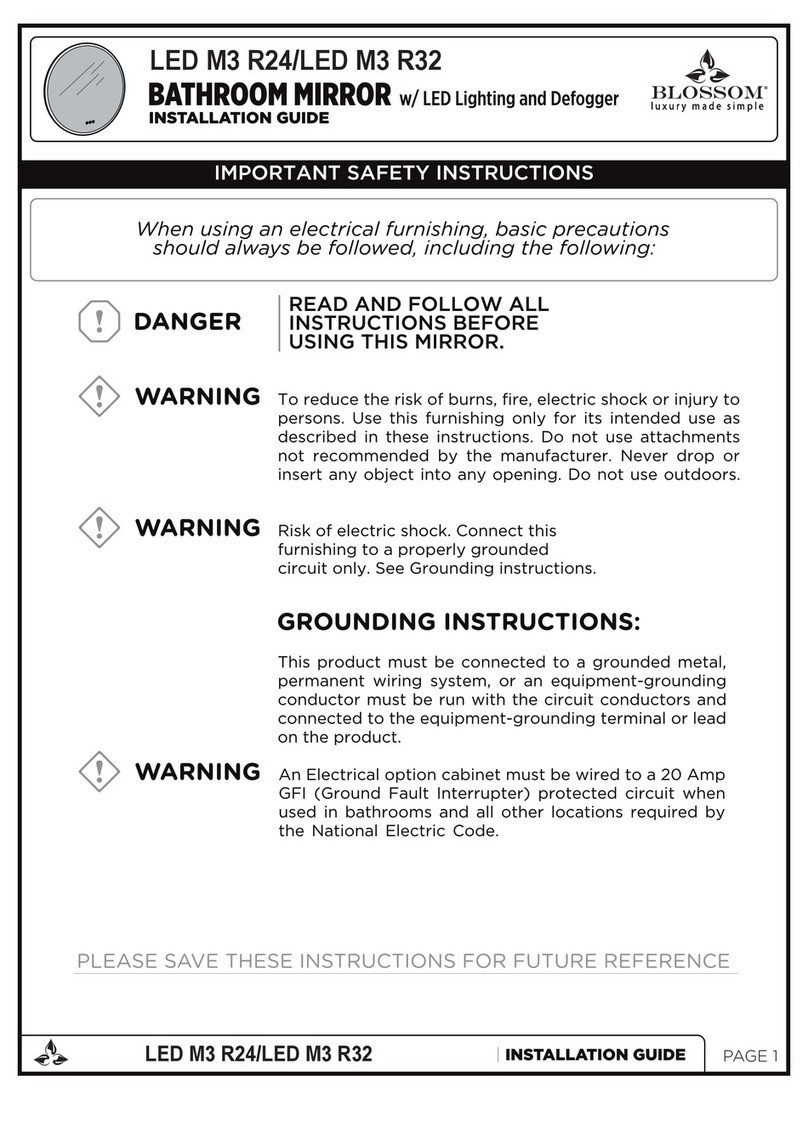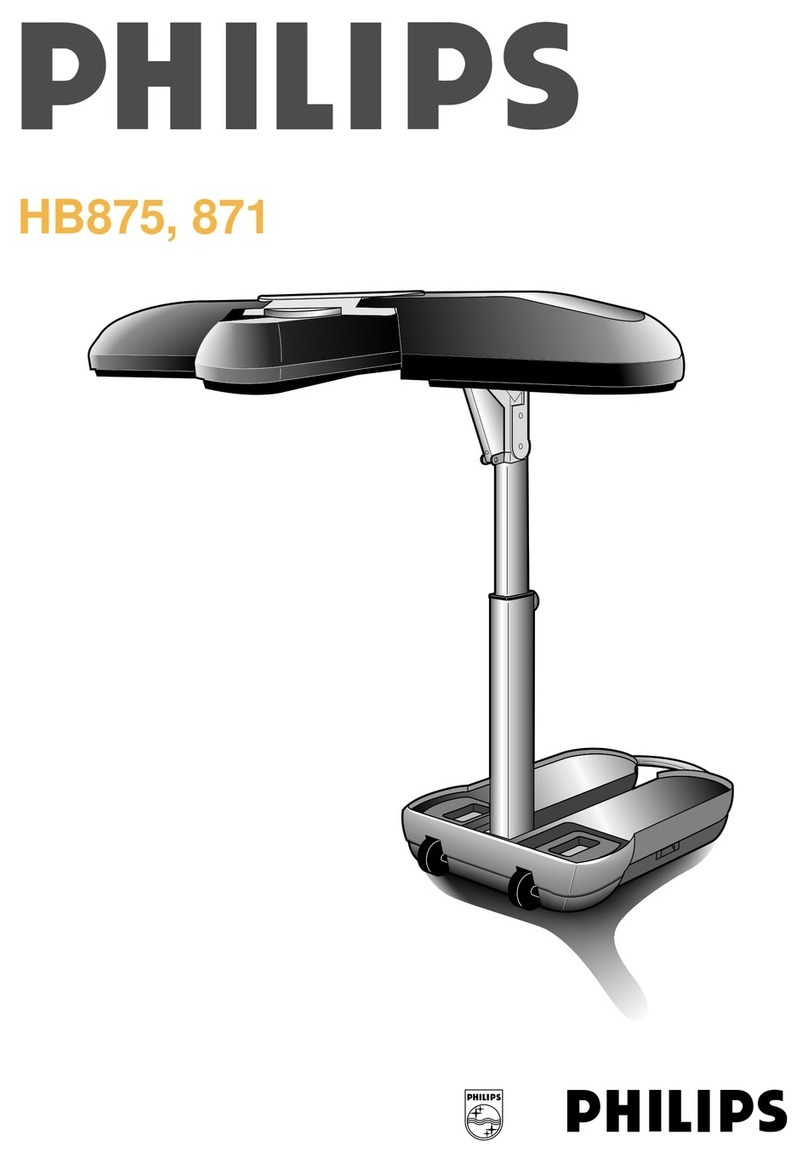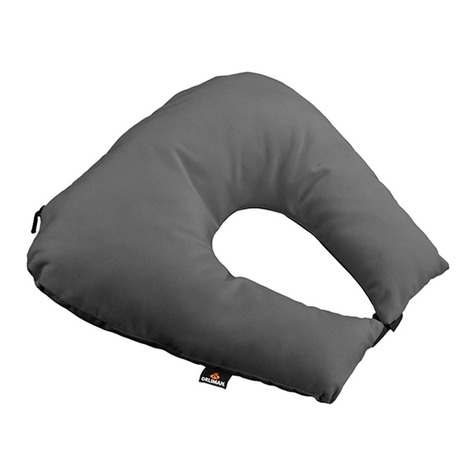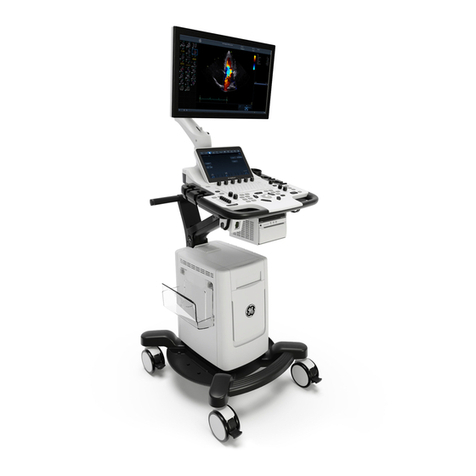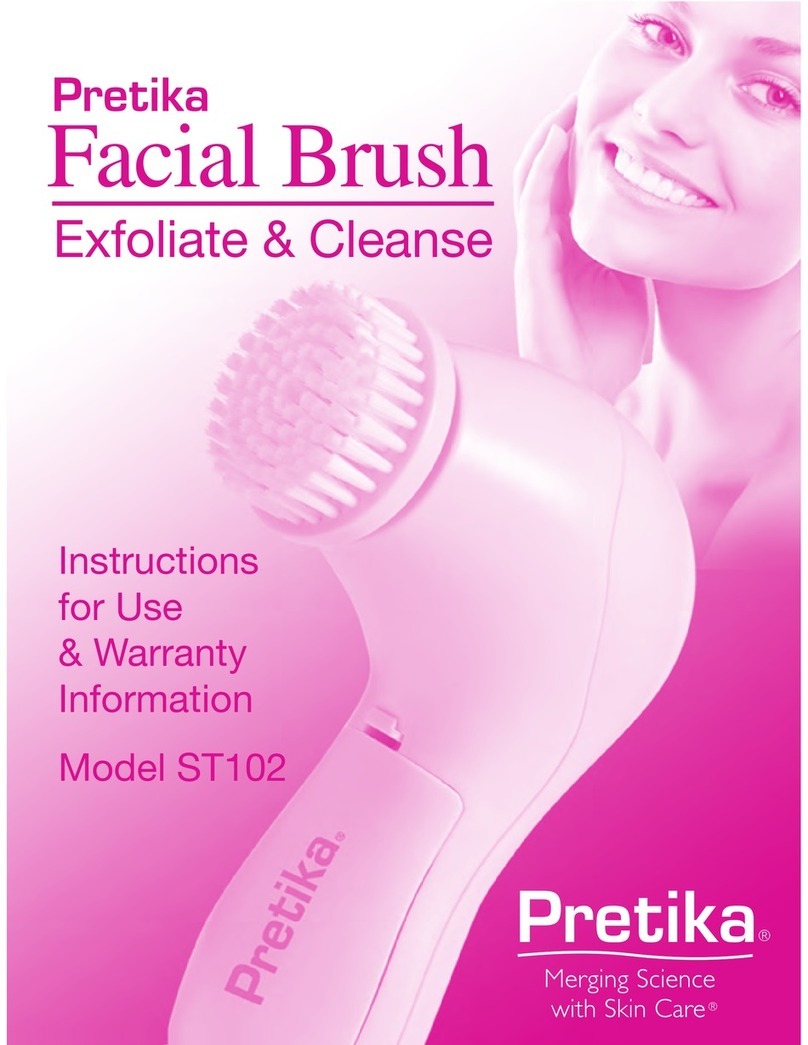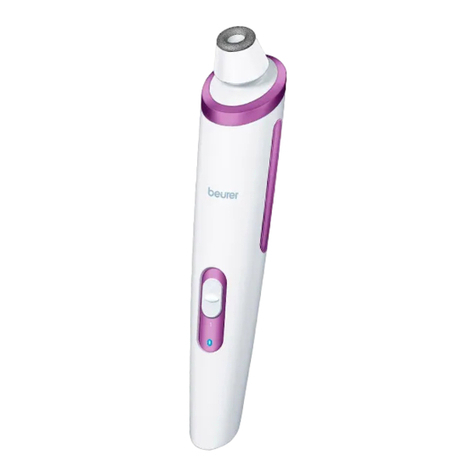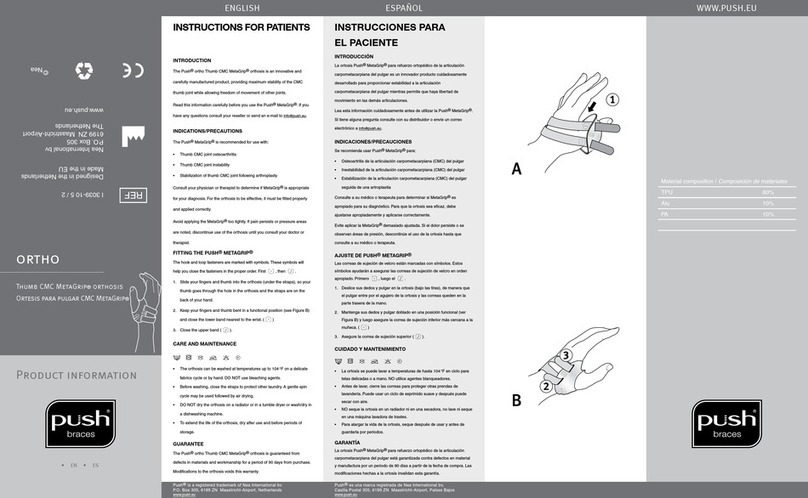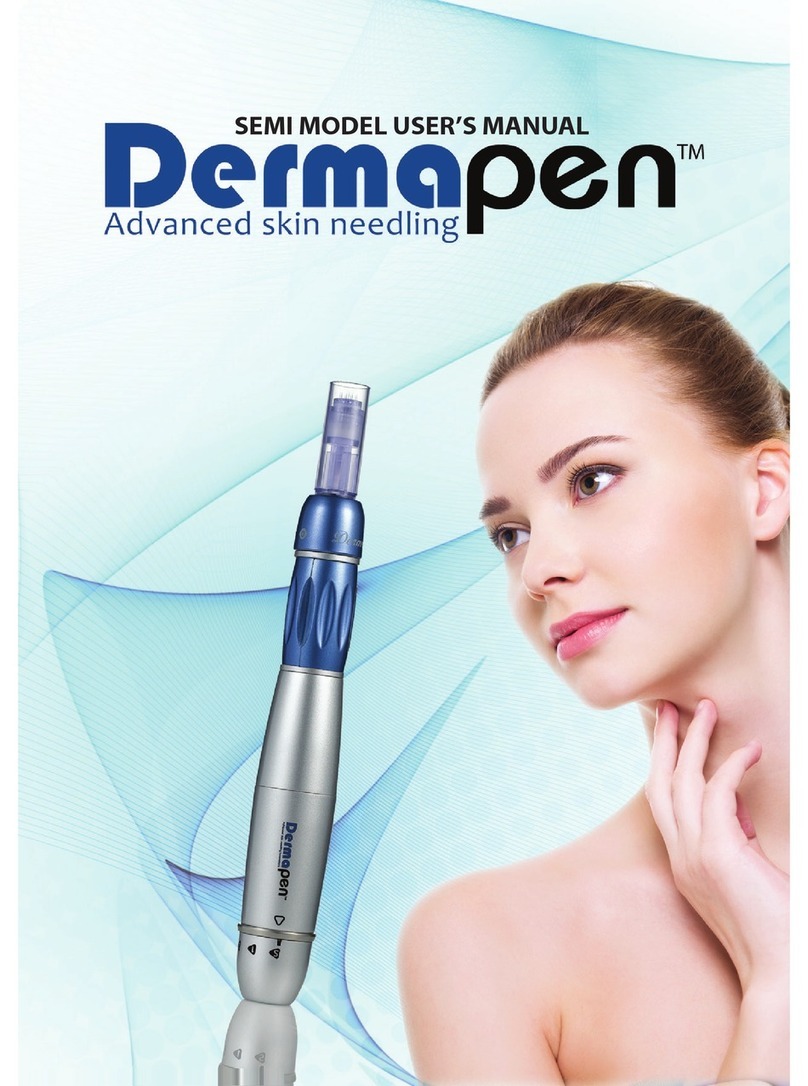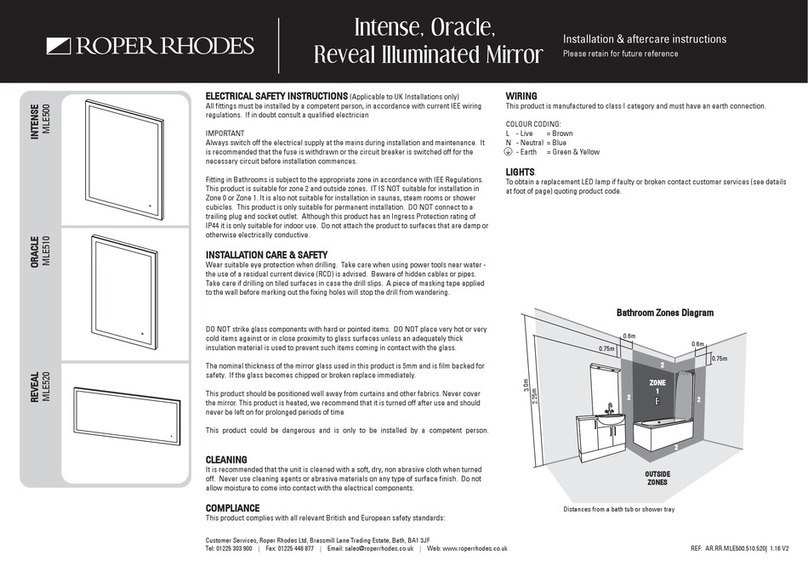natus neoBLUE User manual

User Manual
(Revision Date 2020-05-27)

neoBLUE® blanket LED Phototherapy System User Manual 2
PN 029142 Rev A
Federal Law (U.S.) restricts this device to sale or use by or on the order of a physician (or properly licensed
practitioner).
Natus, Biliband and neoBLUE are registered trademarks of Natus Medical Incorporated.
© 2020 Natus Medical Incorporated. All rights reserved.
This manual may not be reprinted or copied in whole or in part without written consent from Natus
Medical Incorporated. The content of this manual may change without notice.
Natus Medical Incorporated
5900 First Avenue South
Seattle, WA 98108 USA
Telephone +1 650 802 0400
Fax +1 650 802 0401
Technical Service +1 888 496 2887
E-mail: technical_service@natus.com
Customer Service +1 800 303 0306
Customer Service Fax +1 650 802 6620
International Support - Please contact your local Distributor.
Distributor locations can be found at www.natus.com
Natus Manufacturing Limited
IDA Business Park
Gort, Co.Galway
Ireland
2797

neoBLUE® blanket LED Phototherapy System User Manual 3
PN 029142 Rev A
TABLE OF CONTENTS
1. PRODUCT DESCRIPTION........................................................................................................................................5
1.1. Intended Use: ...................................................................................................................................................5
1.2. Indications for Use:...........................................................................................................................................5
1.3. Patient Population:...........................................................................................................................................5
1.4. Physical Characteristics ....................................................................................................................................5
1.5. Power Requirement Information .....................................................................................................................6
1.6. Contraindications .............................................................................................................................................6
2. SAFETY INFORMATION...........................................................................................................................................6
2.1. Explanation of Terminology..............................................................................................................................6
2.2. General Safety Information ..............................................................................................................................6
2.3. Safety Symbols .................................................................................................................................................7
3. COMPONENTS AND USER CONTROLS...............................................................................................................12
3.1. neoBLUE blanket LED Phototherapy System..................................................................................................12
3.2. Light Box .........................................................................................................................................................12
3.3. Fiberoptic Blanket ..........................................................................................................................................13
3.4 Controls ..........................................................................................................................................................13
3.5 Pole-Mounting Hardware (optional) ..............................................................................................................14
4. ASSEMBLY AND OPERATING INSTRUCTIONS ..................................................................................................15
4.1. Preparing the neoBLUE blanket LED Phototherapy System for use:..............................................................15
4.2. Administering phototherapy treatment:........................................................................................................15
5. TROUBLESHOOTING GUIDE ................................................................................................................................17
6. ROUTINE CLEANING AND MAINTENANCE.........................................................................................................18
6.1. Checking the Light Intensity ...........................................................................................................................18
6.2. Adjusting the Light Intensity...........................................................................................................................18
6.3. Cleaning..........................................................................................................................................................18
7. TECHNICAL REFERENCE .....................................................................................................................................20
8. SPECIFICATIONS...................................................................................................................................................21
8.1. Light Source ....................................................................................................................................................21
8.2. Power Supply Specifications...........................................................................................................................21
8.3. Safety..............................................................................................................................................................21
8.4. Dimensions .....................................................................................................................................................21

neoBLUE® blanket LED Phototherapy System User Manual 4
PN 029142 Rev A
8.5. Environmental ................................................................................................................................................22
8.6. Safety Standards.............................................................................................................................................22

neoBLUE® blanket LED Phototherapy System User Manual 5
PN 029142 Rev A
1. Product Description
The neoBLUE®blanket LED Phototherapy System consists of five components: the neoBLUE
blanket phototherapy light box, the fiberoptic blanket with cable, the blanket mattress, the
disposable mattress covers and the power supply.
Before assembling the neoBLUE blanket device and administering phototherapy, read all
sections of this manual carefully. There are safety considerations that should be read and
understood before use.
1.1. Intended Use:
The neoBLUE blanket LED Phototherapy System is intended for the treatment of
unconjugated hyperbilirubinemia in premature babies and neonates. It is intended for use with
patients up to 3 months of age, weighing less than 22 lb (10 kg).
1.2. Indications for Use:
The neoBLUE blanket LED Phototherapy System is indicated for the treatment of
unconjugated hyperbilirubinemia in a hospital environment, and administered by trained
professional medical staff, on the order of a physician, or in the home environment
administered by a trained caregiver. The neoBLUE blanket device provides intensive
phototherapy underneath the patient and can be used with a bassinet, open bed, radiant
warmer, incubator, or while holding the patient.
1.3. Patient Population:
When treating term and near-term neonates with intensive phototherapy for treatment
guidance, please refer to the AAP Guidelines (American Academy of Pediatrics Clinical
Practice Guideline –Management of Hyperbilirubinemia in the Newborn Patient 35 or More
Weeks of Gestation).
When treating preterm neonates with intensive phototherapy, please seek guidance from
physician on duration of the treatment as well as appropriate patient monitoring.
Note: Under the direction of a physician, the neoBLUE blanket device may be used in the
home environment. Refer to your hospital policy and procedure regarding user training for
caregiver and service of the device when used at home.
The caregiver must be provided with the ‘neoBLUE blanket Guide for Home Use’ for adequate
use of the device and must follow the direction provided by physician for duration of the
treatment.
1.4.Physical Characteristics
The neoBLUE blanket device is a portable phototherapy light that delivers a narrow band of
high-intensity blue light via a blue light emitting diode (LED) to provide treatment for
unconjugated hyperbilirubinemia.
Light Source
The blue LED emits light in the range of 400 –550 nm (peak wavelength 450-475 nm). This
range corresponds to the spectral absorption of light by bilirubin and is thus considered to be
the most effective for the degradation of bilirubin. The blue LED does not emit significant
energy in the ultraviolet (UV) region of the spectrum, so there is no concern about UV
exposure to the patient. As with all phototherapy lights, protective eyeshades such as the
Natus Biliband® Eye Protectors must be used to protect the patient’s eyes from excessive
light exposure.
The LED has minimal light output degradation over its lifetime with proper use. Nevertheless,
the biomedical engineer can adjust the output of the LED using a potentiometer located at the
Other manuals for neoBLUE
7
Table of contents
Other natus Personal Care Product manuals
